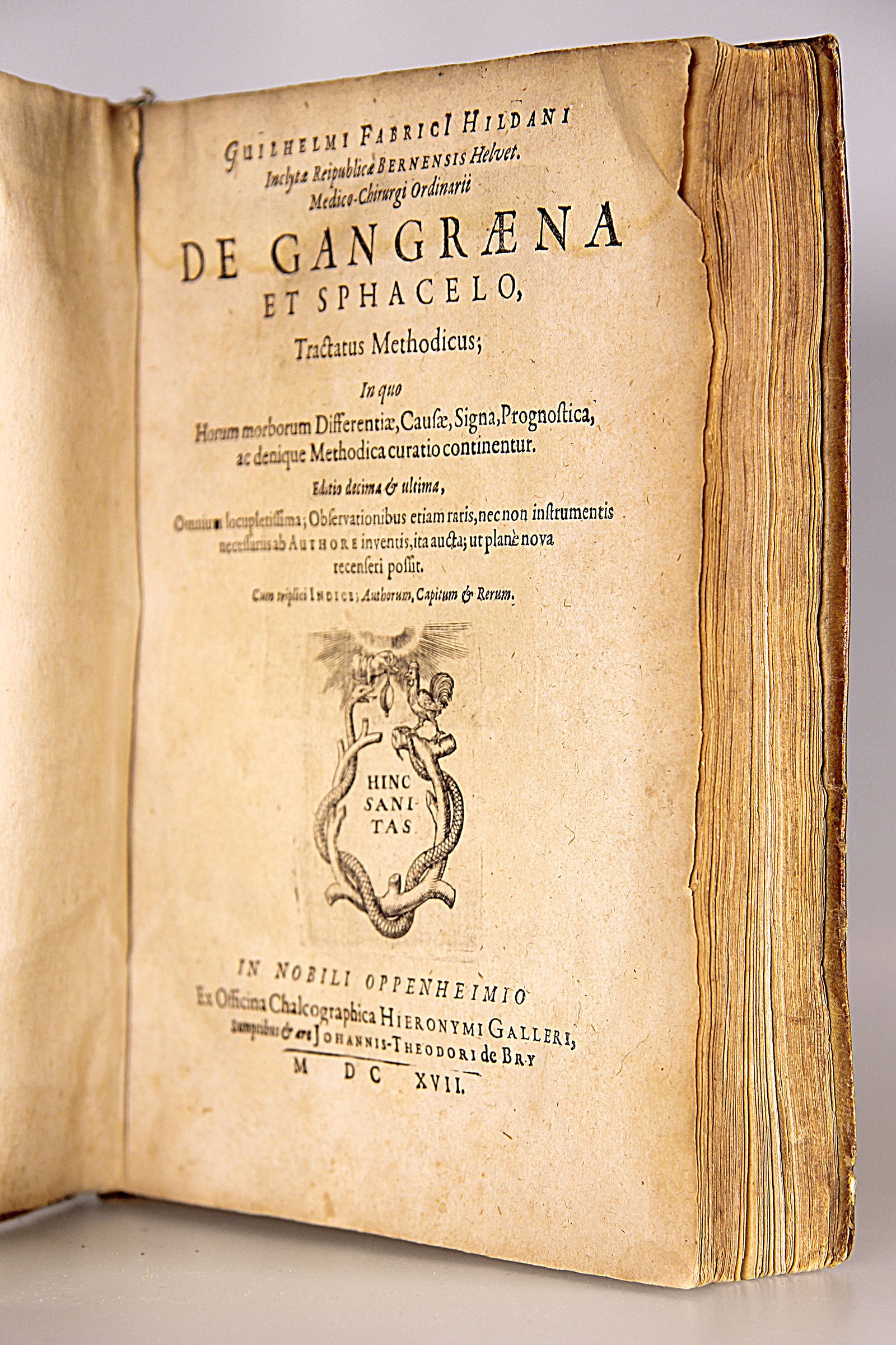Wilhelm Fabry beschreibt in „De Gangraena et sphacelo“ („Vom heißen und kalten Brand“) die Behandlung von entzündeten Gliedmaßen. Fabry war der Erste, der eine Amputation oberhalb des erkrankten Gewebes vertrat. Es war sein erstes veröffentlichtes Buch und erschien 1593. Es wurde elfmal in überarbeiteter Form neu aufgelegt und auch ins Französische übersetzt. Dieses Exemplar stammt aus der der zweiten lateinischen, gegenüber der ersten von 1593 erheblich erweiterten Ausgabe von 1617. Es ist in Pergament gebunden, der Kupferstich auf der Titelseite umschließt das Motto "Hinc Sanitas" (Von hier aus Gesundheit/ Heilung).
en

